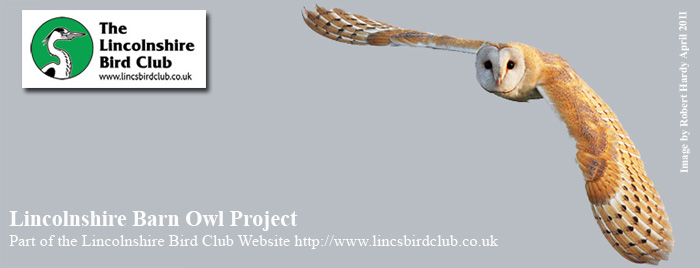Sunday 1 August 2010
1st August 2010
The two owlets are now flying well, but have been returning to the box during the daytime. We suspect that they will leave the box totally, within the next week or so as they become more independent. They now have plenty of time to master their hunting skills before the onset of winter.
Sunday 18 July 2010
18th July - fingers crossed
The chicks are not always in view, as they can wander out of sight of the camera to the entrance of the box. These two chicks have survived the wet and windy weather this week. Many other owlets have not been so lucky, as recent checks of some nest sites suggest that between a quarter and a third of young Barn Owls have died of starvation over the past week, because the adults were unable to go out hunting in either wet or windy conditions. Even very large chicks at 6/7 weeks old, (same age as these two) have not survived................a very sad state of affairs.
Monday 12 July 2010
12th July 2010
The two chicks are now six weeks old and appear to be doing well. Two chicks seem to be the normal brood size in the area around this box. Barn Owls in some areas seem to have been affected badly during the cold spell earlier in the year, with the result that they have laid fewer eggs than normal. In a good year Barn Owls will average 4 or so young per brood. Hopefully these two chicks will fledge successfully.
Thursday 24 June 2010
Video footage from 2nd May 2010
Video footage of the 3rd egg - 2nd May 2010
Video footage from 29th April 2010
Video footage of the 2nd egg - 29th April 2010
Video footage from 26th April 2010
Video footage of the first egg - 26th April 2010
Wednesday 23 June 2010
The camera was installed last Christmas. From mid March the owls were sometimes in the box, but from the beginning of April the female was ever present.
Three eggs were laid.
Egg 1 on 26th April
Egg 2 on 29th April
Egg 3 on 2nd May
A month later the chicks hatched.
Chick 1 on 27th May
Chick 2 on 30th May
Chick 3 on 2nd June
Since then they have had mixed fortunes. The heavy rains on two days in early June meant hunting was difficult. The male didn’t provision the nest as much as he should, leading us to believe he could have another mate in a nest nearby. Somehow, the chicks made it through.
However, on the morning of 16th June, one of the babies was eaten by a sibling. This is not uncommon in Barn Owls.
Later that day, the female and remaining two chicks were ringed under licence.
Soon the chicks will be big enough to be left in the evenings whilst the female hunts as well.
Three eggs were laid.
Egg 1 on 26th April
Egg 2 on 29th April
Egg 3 on 2nd May
A month later the chicks hatched.
Chick 1 on 27th May
Chick 2 on 30th May
Chick 3 on 2nd June
Since then they have had mixed fortunes. The heavy rains on two days in early June meant hunting was difficult. The male didn’t provision the nest as much as he should, leading us to believe he could have another mate in a nest nearby. Somehow, the chicks made it through.
However, on the morning of 16th June, one of the babies was eaten by a sibling. This is not uncommon in Barn Owls.
Later that day, the female and remaining two chicks were ringed under licence.
Soon the chicks will be big enough to be left in the evenings whilst the female hunts as well.
Lincolnshire Barn Owl Project
We are fortunate in Lincolnshire that we have the most breeding Barn Owls anywhere in the UK and they breed at the highest density in the UK. There are approximately 900 pairs in Lincolnshire.
This camera is in a pole box in the paddock behind a house in a village north of Sleaford.
The box has been up for three years but this year is the first time the owls have been successful. The chicks were predated at an early stage in 2009.
This camera is in a pole box in the paddock behind a house in a village north of Sleaford.
The box has been up for three years but this year is the first time the owls have been successful. The chicks were predated at an early stage in 2009.
Subscribe to:
Posts (Atom)






